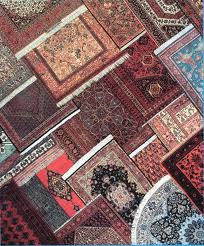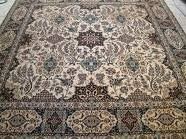 The Persian carpet reached its peak during the Safavid Dynasty (1502-1736), during which Iran reached its highest level in terms of artistic development.
The Persian carpet reached its peak during the Safavid Dynasty (1502-1736), during which Iran reached its highest level in terms of artistic development. When Shah Ismail took the throne in 1499 laid the groundwork for what would later become a national industry, which would be the envy of many neighboring countries. The manufacture of carpets, along with calligraphy and miniature painting flourished up to an exceptional standard.
When Shah Ismail took the throne in 1499 laid the groundwork for what would later become a national industry, which would be the envy of many neighboring countries. The manufacture of carpets, along with calligraphy and miniature painting flourished up to an exceptional standard. Carpet factories were created in the cities of Kerman, Isfahan, Kashan and Tabriz. Approximately 1,500 copies each of the time eactualmente are preserved in museums and private collections worldwide.
Carpet factories were created in the cities of Kerman, Isfahan, Kashan and Tabriz. Approximately 1,500 copies each of the time eactualmente are preserved in museums and private collections worldwide.
Shah Abbas (1587-1629) encouraged trade with Europe and became the new capital, Isfahan, one of the most beautiful cities of Persia. He created a carpet factory where they worked real most skilled designers. Most of these carpets were made of silk and gold thread and silver. The best known carpets of the period, dating from 1539, and from the Mosque of Ardebil, in the opinion of many experts, represent the culmination of that development of carpet design. King Louis XIV of France even sent its own experts to Persia to learn the layout.

Sigmund King of Poland sent his operators to purchase rugs from Persia. All these carpets were made for royal courts and noble, to be protected as valuable treasures. They had their own guards, custodians and were used only in case of acts and other special occasions.












1 comments:
interesting history of the Persian carpet! So, in the past this Persian carpet was made of silk and gold thread and silver. Actually, these carpets were made for noble and royal courts.
Post a Comment